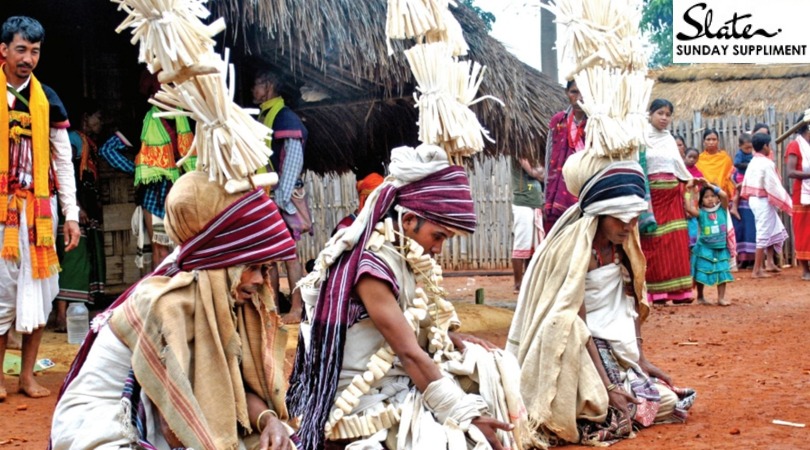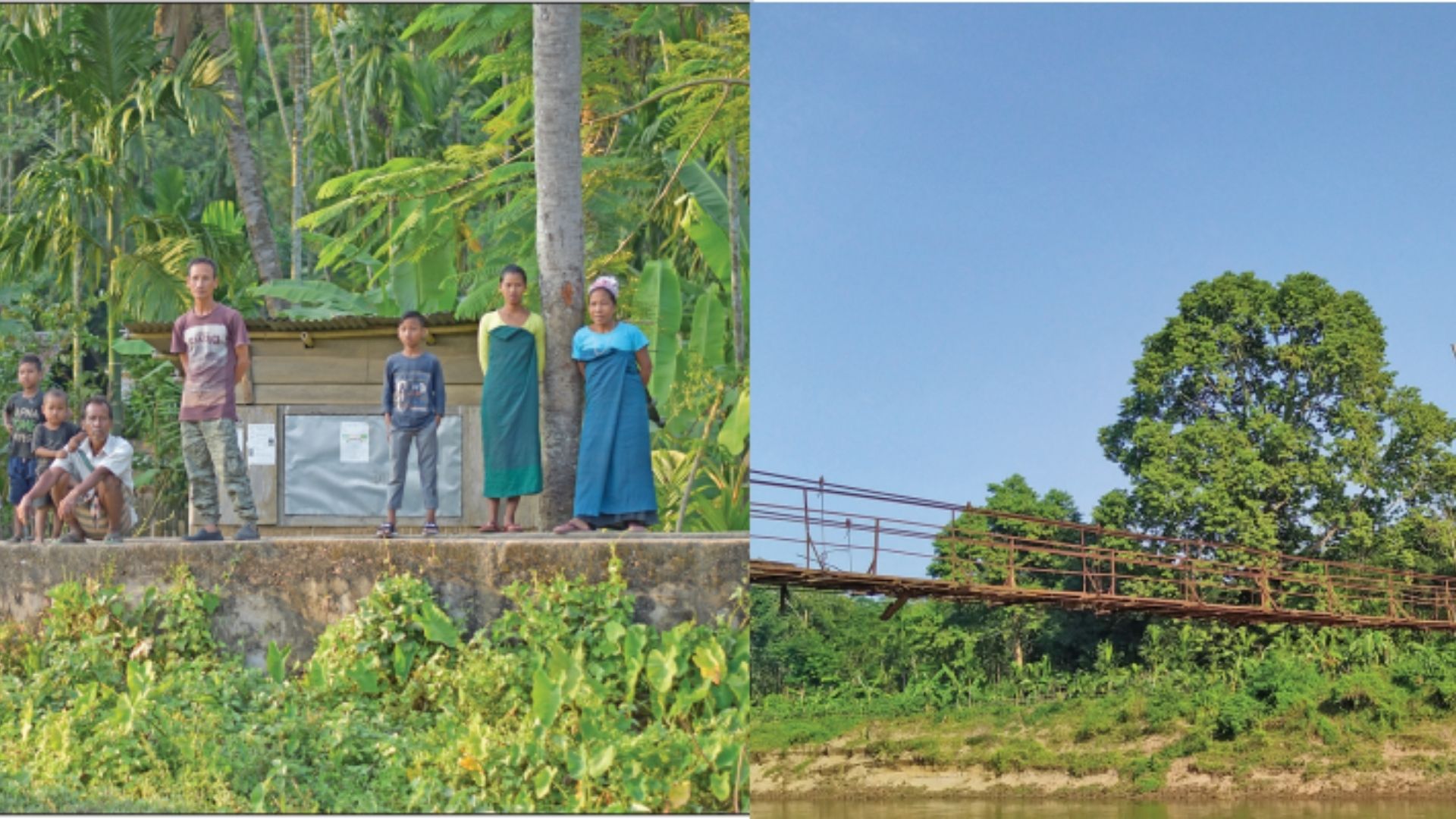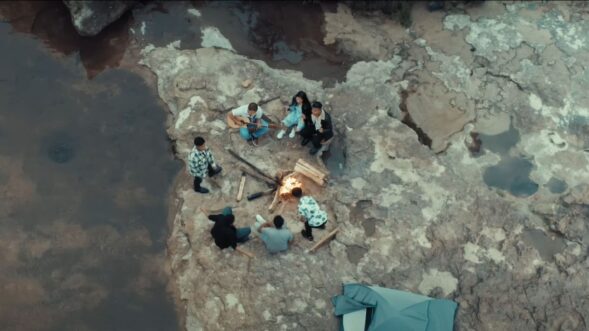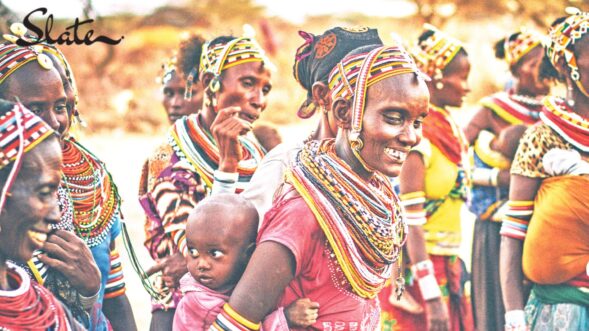
By Saiñkupar Syngkli
At the northwestern edges of Ri Bhoi bordering Morigaon in Assam, the Tiwa people spread over five raids: Amjong, Lymphuid, Maïong, Makdoh and Marngar. The Tiwas have inhabited both the plains and hills adjoining these borderlands for centuries, yet little is known about them. Knowledge of their existence is unknown to many outside of Ri Bhoi, with only a vague recollection when the other name for the Tiwas is mentioned, the Lalung, a term found primarily in colonial literature.
For instance, on the Tiwa language, which is part of the Bodo–Garo group of languages, the 1909 Linguistic Survey of India states “All that has been hitherto known concerning this language is a short vocabulary given by Mr Gait on 162 of the Census Report of Assam for 1891. No explanation of the name has ever been offered. How the Lalungs came to their present site, or when, is not known. They are not mentioned by ĀAhom historians, nor in the accounts of the Koch kingdom. In Nowgong they are said to have a tradition that they came from the Jaintia Hills, while some of the Lalungs in the latter district say that their ancestors immigrated thither in the reign of Jaintia Raja U-mon Gohain. Another account, however, says that the Lalungs claim to the autochthones of the Jaintia Hills”.
However, the Ahom Buranjis do record their existence as datiyaliya, those at the margins, with notes on conflicts between the tribe and the successive kingdoms it has fallen under. Unlike Assam, where the Tiwas are better organised, in Meghalaya, the tribe continues to live at the margins – both figuratively and literally. The writings on the Tiwa, in fact, are so muddled, that you are likely to find conflicting information on the tribe, its purported origins, their practices and the differences between the hill and plains clans. The most recent and cleanest documentation is by Raktim Patar, in The Tiwa Ethnohistory, published in 2021.
Later documentations show a deeply rich culture whose traditions, administration and very kinship systems have evolved through its numerous interactions with Khasi, Jaiñtia, Ahom, Karbi and Mikir communities, to name a few. Despite conversions from their original shamanistic beliefs first to Hinduism, under the Ahom, and later to Christianity through Khasi–Jaiñtia Presbyterian mission, as well as colonial ones, complex and diverse practices from the old faith, have persisted, especially amongst the Hill Tiwas. This is but a small and incomplete introduction to one of the many intriguing cultures and neglected communities in Meghalaya.
The road to the Tiwa heartland, if you only travel within the state, takes you through patchy roads, mud and debris. Entire stretches through the Umsning tehsil are battered, and worsen as you start traversing through Tiwa raids.

By the time I reached Ambudighat, the heat was sweltering and the sun sharp and unrelenting. The village, part of the Amjong raid, is sparsely populated, opening into green fields with a market street cutting through the centre. Here, the people grow rice, gourds, alocasia (wang), silkworms, spices and fruit; they have a strong appetite for pork and fowl; and tradition demands that guests are served chu magra, rice beer. Ceremonial rice wine, called phudiga, is served in vessels fashioned from gourd. Crafts, in both dried fruit and bamboo, are thus the expertise of the Tiwa.
At Ambudighat, the general secretary of the Tiwa Youth Association, Meghalaya, Albert Dillar, was elated. “There is no electricity”, he said with a laugh, “so there is no way to charge your cameras and phones”. When asked how long the electricity had been gone, a young Tiwa man in his company piped,“Who knows? Two hundred years maybe”. Even though Ambudighat is officially on the grid, electricity is a rare feature in the village that has learnt to rely on solar power instead, for their domestic needs.
“The people are only now receiving education”, he says. “But we have to study in Nongpoh usually because we have very few schools. Many of the older people cannot even read or write”. Yet, living between the Khasis and Jaiñtia people on one side and the Assamese – just across a bridge with broken planks over Wah Umsiang – on the other means that many among the community are multi-lingual, speaking Assamese, Tiwa, Khasi and a spattering of English. Amjong, though, is not the only raid with villages devoid of electricity. Lymphuid, Maïong and Makdoh face similar problems. Despite falling under the Hima Khyriem and being voting members of the District Council, our Tiwas, unlike there Assamese counterparts, are yet to receive Scheduled Tribe status or be recognised for their importance to the multi-ethnic tribal milieu of this region’s history. Both in 2001 and 2019, the tribe’s representatives submitted a memorandum of recognition to the chief ministers at the time, but to no avail.
There is little literature in Tiwa; like Khasi, a Latin script was afforded them, but it can seldom capture the nuances of their sounds. At least one school offers literacy in Tiwa, but most students are forced to travel farther out for a complete education. The flipside of the rise in education, however, has been the loss of tradition. Central to the Tiwa social structure is the shamadi, an institution that has political, judicial and spiritual importance.
The shamadi is a dormitory for bachelors. Constructed on solid, large trunks that function as beams and thatched with straw for the roof, women have been historically barred from the shamadi. Here, unmarried Tiwa men are mandated to spend their nights – in the Tiwa custom, once a boy is ten years of age, he must spend every night till his marriage in the shamadi, where he will be initiated into the cultural traditions of the tribe and trained accordingly. But the demands of modern life, religious conversion, school and studies mean that few practise this custom with rigour.
At Amjong, young children escaped the heat of the day sprawled on the floor of the shamadi, browsing the Internet on their smartphones. Besides drawings of nature, the beams of the sacred shamadi are decorated with the mature breasts of women in fours. Why these breasts are carved into the wood is explained differently by different people.
Some claim it is a remnant of a once-matriarchal society, while others say the breasts form the symbolic presence of women in the otherwise all-male shamadi. This ambivalence is most seen in how the Tiwas inherit their clan as well. Dillar says, “Sometimes we follow the mother’s name and some people they choose patrilineal system”. If records are to be taken for granted, those in the plains are most likely to have abandoned matriliny in favour of inhering from the father, but unlike most communities in the patrilineal parts of India, a couple is given a choice.
The Tiwas now find themselves between the need to adjust to modern life while finding a way to preserve their culture. Some of their practices, though, are completely at odds with modern life. For example, in a Tiwa house, called nobaro, the largest room is the nomaji, where we sat to converse over rice beer and where also grains are stacked in straw and grass. Here, a bed is traditionally disallowed and there is no place for unmarried bachelors (who are expected to spend nights at the shamadi) to sleep.
As time sweeps through these villages, new ways of living are slowly eroding the customs of the Tiwas. Yet the people are joyous and their life, at least spiritually, complete. Their demands are few – education and utilities. They are thus afflicted by the curse that reigns throughout Meghalaya: to be poor on famously fertile lands. A shy young observer, reluctant to make conversation, had only a few sentences to say before we parted ways: “Tell the people we are also from Meghalaya. We feel that many have forgotten us, but we are still here, and we are your brothers and sisters”.
(Adapted from The Tiwa Ethnohistory by Raktim Patar)






